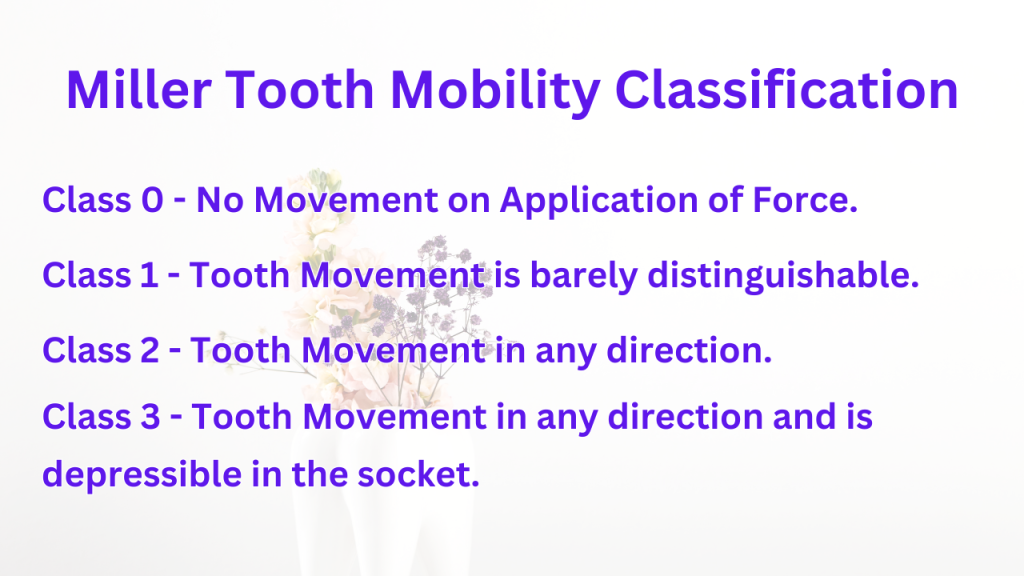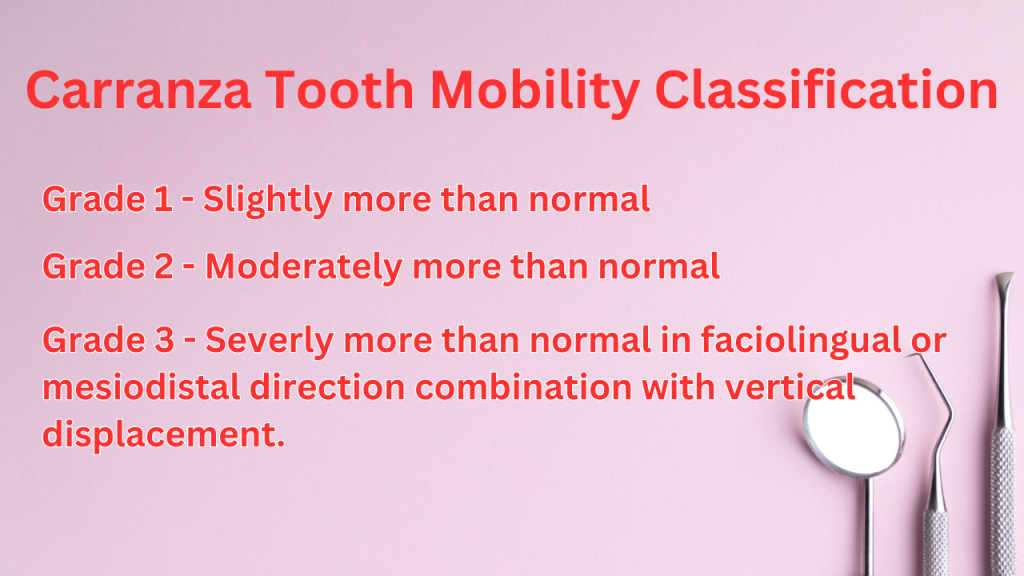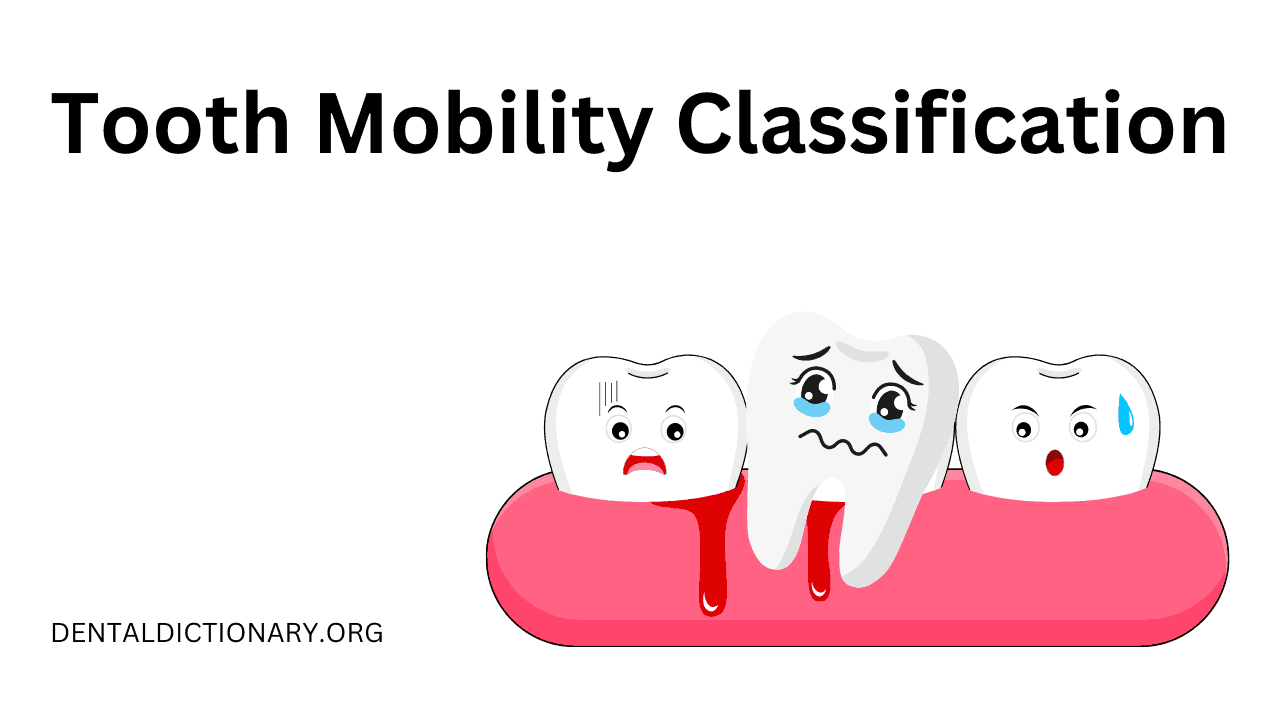Tooth Mobility Classification in Periodontal Patients
Tooth mobility is the movement of teeth in their sockets. While some amount of tooth mobility is normal, excessive tooth mobility can indicate underlying dental problems. Dental professionals use the tooth mobility classification system to evaluate the severity of tooth mobility and determine the appropriate treatment.
Understanding Tooth Mobility
Tooth mobility occurs due to numerous factors, and it can be physiological or pathological.
Physiological Tooth Mobility
All teeth are somewhat mobile in the jaw, which is completely normal. When you put pressure on a tooth, it deviates slightly back and forth since the Periodontal ligament cushions the tooth and helps absorb a sudden shock. But if you are experiencing a highly mobile tooth, it can be classified as pathological tooth mobility.
Pathological Tooth Mobility
Pathological tooth mobility can be described as a mobile tooth with an underlying cause. Some of the causes of pathological tooth mobility are:
- Trauma to mouth
- Occlusal Trauma
- Periodontal Disease
- Gingival Recession
- Osteoporosis
- Age
- Pregnancy
Tooth Mobility Classification
The tooth mobility classification system determines the degree of tooth mobility. The following are the different classes of mobility:
Class 0 – This classification indicates no detectable mobility.
Class 1 – This classification indicates slight mobility of the tooth, up to 1 mm in any horizontal direction.
Class 2 – This classification indicates moderate tooth mobility, up to 2 mm in any horizontal direction.
Class 3 – This classification indicates severe mobility of the tooth greater than 2 mm in any horizontal direction.

Miller Tooth Mobility Classification
Miller’s tooth mobility Classification is one of the most widely used classifications for tooth mobility. He divided tooth mobility into 3 classes:
- Class 0 – No Movement on Application of Force.
- Class 1 – Tooth Movement is barely distinguishable.
- Class 2 – Tooth Movement in any direction.
- Class 3 – Tooth Movement in any direction and is depressible in the socket.

Carranza Tooth Mobility Classification
Carranza’s classification for Tooth mobility is as follows:
- Grade 1 – Slightly more than normal
- Grade 2 – Moderately more than normal
- Grade 3 – Severly more than normal in faciolingual or mesiodistal direction combination with vertical displacement.
Treatment Options
The treatment of Tooth mobility is based on the underlying cause of tooth mobility. In most cases, it subsides after treating the underlying cause. The basic approach should be Scaling & Root Planing followed by treatment of the underlying cause. Here are some of the options for treatment for Tooth Mobility if it doesn’t subside after treating the underlying cause:
Splinting
Splinting involves using a wire or composite material to attach a loose tooth to adjacent teeth. This can help stabilize the tooth and prevent further mobility.
Occlusal Adjustment
Occlusal adjustment involves reshaping the teeth to create a better bite so the force on the teeth spreads evenly. This can help alleviate tooth mobility caused by occlusal trauma.
Surgery
In severe cases of tooth mobility, Surgery such as bone grafting is carried out to support the tooth and restrict it from moving.
Conclusion
Tooth mobility can indicate underlying dental problems and should be evaluated by a dental professional. The tooth mobility classification system is a useful tool to determine the severity of tooth mobility and guide treatment decisions. Proper treatment can help stabilize loose teeth and prevent further damage to the teeth and gums. For more information regarding tooth mobility and periodontitis, you can refer to this article.
Frequently Asked Questions
Here are some of the FAQs and their answers.
Can tooth mobility be reversed?
Tooth mobility can be reversed by treating the underlying cause in most cases. If the tooth mobility is still present then it can be stabilized but not reversed.
Is tooth mobility a sign of gum disease?
Yes, Gum Disease is one of the main cause resulting in Tooth Mobility
Can tooth mobility be prevented?
Yes it can be prevented by maintaining proper oral hygiene and taking a dental visit every 6 months for routine checkup
Is surgery always necessary for severe tooth mobility?
Surgery is only necessary in severe cases of Tooth Mobility. Slightly mobile teeth can be treated without surgical procedure.
